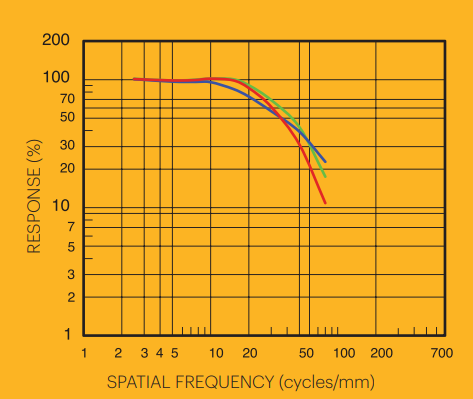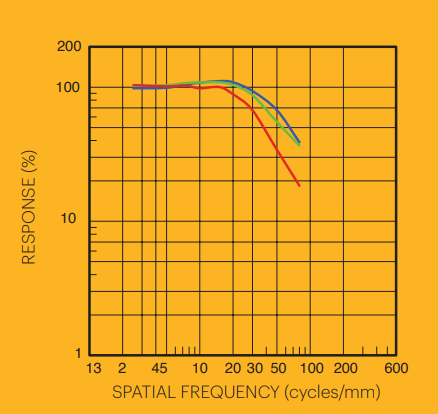
Jack Jin
Basic Member-
Posts
47 -
Joined
-
Last visited
Everything posted by Jack Jin
-
You got a helium live stream custom body, it can't output a video signal via sdi or hdmi, only optic fiber out. Nor can it record internal r3d or prores onto a minimag. It's not meant to be rigged at all for regular shooting, as it doesn't have any threads for rigging. You should probably return it. https://www.adorama.com/us1779533.html
-
Hi there, I've been looking to do tests with 16mm on a Spirit SDC2000 or HD telecine for a more 2000s ish vibe vs a modern scanner. Last time that I did this I used mono no aware for their spirit, but they have since sold it in favor for their Xena, it seems like Cinelab Boston has also sold off their Spirits. I contacted Colorlab and they also said that they do not have it anymore. Is Spectra the only one that still has it? Their rate is pretty expensive. I do know that Cinelab London has a Spirit 2K and 4K, but shipping there is a bit expensive so would preferably stay within the US. Thank you!
-
What's the sharpest Vision 3 filmstock?
Jack Jin replied to Jack Jin's topic in Film Stocks & Processing
Yes exactly! I'm trying to test the sharpness of the lenses + camera with the filmstock that resolves the highest amount of detail, thus my dilemma, I do wonder though if 200T or 50D is usually better in resolving power? Thank you. -
Hey guys, I've been looking at doing some sharpness tests with a bolex rex and some prime lenses, usually I would assume that 7203 50D would be the sharpest filmstock for this purpose since it's so clean, but I stumbled on some old posts here that says that 200T in fact had more detail while still not having that much more grain, and after checking the MTF charts for each that seems to be the case. Which stock in practice is sharper? Thank you!
-
I first add noise/grain on my first node, and then CST from whatever log format I'm shooting in to Apple log as gamma and rec 2020 as gamut. And the official apple log to rec709 lut does a really good job at mimicking the weirdly saturated HDR tone mapping from phone footage. And then I use the fast setting to noise reduce the footage, and then sharpen it to to mimic to typical phone footage texture, you can also export the footage to h264/265 with low bitrate to further enhance the authenticity of the look.
-
16mm film scanning - latest tech? information?
Jack Jin replied to Stephen Perera's topic in Film Stocks & Processing
To add on top of what Rob said, the scan station 6.5k with HDR is probably the most cost effective and high quality scanning option you'd have, the imager is excellent with minimal noise and no FPN, with the two flash HDR it does get incredibly close to the other true RGB options on the market at a fraction of the price, with even better range for positive/print film. The negative space does 2k HDR scans down sampled from the full 6.5k readout for only 0.20usd per foot for 16mm, and the 4k/6.5k option is only 0.25 USD/ft as well. Their 35mm scans are even cheaper. Highly recommend their scans -
Ayy it's me! The HVX200, specifically the 200A is really nice! Good bitrate especially vs HDV (25mbps) at a max of 100mbps if you choose the 1080P modes. It's also solid state so no worries about the tape mechanism failing. And because the camera has a USB 2 port built in, you don't need to shell out crazy money for the P2 reader, you can just use the camera and drag and drop the files like any other modern cameras. The HVX200A and HPX170 both has the revised version of the sensors with much better lowlight performance. Those are the versions that I recommend looking for, especially the HPX170 because of its drastically smaller and lighter footprint due to the exclusion of the mini dv tape deck. The camcorder's prices these days are still a bit inflated due to its popularity with skateboard filmers. As it was the de facto "HD" Camera since 2009 when paired with the century Xtreme fisheye. But it's a great look still, and it's probably the best CCD camcorder these days because of the fact that you don't need to either maintain/fix the tape deck or try to capture the mini dv through fire wire which is really difficult to do these days. Here is another one I shot with the HVX in tribute to my favorite film All about Lily Chou Chou, which was shot on the Sony F900, thus I was trying to emulate that look with the picture profile and the 3CCD definitely helps too. https://youtu.be/_8vjZeaWD2E?si=F2Cl2p8Tws-nJjjE
-
In terms of latitude, most modern sensors will be at least 2-3 stops better then the 5Dii, both in highlight and shadows you will see much more range. But the nature of the digital formats means that once you go out of gamut or clip one of your channels it's still gonna inevitably going to look harsh. But having a newer camera with more range means that you can underexpose a lot more to avoid that from happening. Rolling off the curve in post also helps with the appearance of the clipping.
-
The nature of digital means that at least with raw files there is going to be no roll off built in. But of course the method of processing within the editing software of your choice can add curves or highlight recovery to your file when debayered which can help with highlight roll off. And to be completely honest in terms of sensor performance stills cameras has plateaued in the last 10 years, all the fullframe sensors have been on the 14 stops range since the original nikon d800. So it's more about the functionality of each different camera, like autofocus, burst speed, ergonomics etc. And since most modern cameras are so clean, I personally underexpose 3-4 stops when shooting at base iso of 64 or 100 to preserve more highlight detail like film. And convert the raw files from my stills camera to DNG and grade them in davinci as I can debayer it in log and do much more in terms of grading and film emulation. I'd say if you are attracted to the film workflow, look at second hand Fuji gfx cameras as they have gotten pretty cheap, and of course has film simulation that are very pretty, the larger sensor is also cool, with some FF vintage lenses being able to cover it as well. Also I believe metabones and kipon sells speed boosters for the gfx cameras to get a full 645 fov, so u can fully utilize medium format glass if you're into that.
-
Greig Fraser - The Creator - 12800 ASA. Is this correct?
Jack Jin replied to Iggy Heringa's topic in General Discussion
I'm assuming he means he used the fx3 's second gain of 12800 ASA, but rated it at a lower ASA to give the sensor more light. Like how if you shot on 500T but rated it at 200 ASA to expose for a dense negative. -
Hi there, we are a boutique filmlab based out of South Korea, we are the first film lab to have opened in Korea in nearly a decade. Our goal is to bring back the beauty of shooting film to Korea. We are currently looking to upgrade to processors that can take multiple rolls of film at once to speed up our workflow, also to increase the consistency in density and color of the developed film, but we are looking for options that take up a small footprint, which the current existing options in the market doesnt seem to offer. please reach out to jyb271155@gmail.com if you know how to make a film processor, thank you.
-
Hi there, I'm looking for a non automatic working R16 right now, so that I can fit bigger lenses and adapters onto to camera, thank you. Email: yj2711559@gmail.com
-
Hi unfortunetly it's not available anymore, wishing you goodluck on your search for the dragon.
-
Selling my beloved epic dragon set, has 1800 hours on it, and has given me amazing footage. 2950 USD for the Set, Shipping Worldwide (Shipping Included!) RED Epic Dragon 6K Body (1800 Hours) RED EF Mount RED Side SSD Minimag Module RED DSMC1 Side Handle RED DSMC Fan 2.0 RED 480GB Minimag Smallrig Top handle Wooden Camera Quickback V mount battery plate images of the set: https://drive.google.com/drive/folders/1v4_sxnT3cgBZjNv2Eo7_ecCdGDrYf9aR?usp=sharing
-
DM Sent!
-
I want to talk about film scanners.
Jack Jin replied to Jaehyun Kim's topic in Film Stocks & Processing
안녕하세요, 저도 한국에서 16mm 필름을 촬영하고 있습니다. 필름을 어느 필름랩으로 보내십니까? 미국으로 보내시겠습니까 아니면 일본의 TOGEN Filmlab으로 보내시겠습니까? -
Anamorphic 16mm vs Techniscope
Jack Jin replied to Owen A. Davies's topic in Film Stocks & Processing
I'd say go with 2 perf and use the mini hawks for the anamorphic bokeh but spherical sharpness and speed. -
Link to full short: https://www.youtube.com/watch?v=gYZHUB_uj0s&ab_channel=crappyfish123 I shot this project partially on ultra 16 and Vision 3 250D, and majority of it was shot on my Red Epic Dragon 6K. The lenses I used were mostly the Tamron 24-70 f2.8, and the Canon 24mm f1.4L ii for the early morning shots, with the Tokina 11-16 used for the sports shots. The compression ratio used was 6K HD and 5k HD at 6:1 to avoid artifacts. I pushed the Red to 6400 and 12800 in order to get better highlight latitude and also more noise and texture. Since I wanted a more gritty look to match the 16mm footage. The whole short film is shot at my classmate/actor's apartment and our highschool. Would love to know your guy's opnion and how I can further improve!
-
Holy cow Alan Gordan has been around for that long? Crazy
-
the f900 is a contender, but ism't the viper from 2004? Also, where there is bokeh i don't see any signature rainbow bokeh from the 3ccd on the f900, so I think it's film? But no idea what telecine/scanner/colorgrading suite could be on, the lighting is super interesting though!
-
This is a japanese music video shot around 2000, but the colors look very interesting and almost print film like and switches to a cold and desaturated palette midway through, any idea how and what equipment they could have achieved this look on? Thank you very much.
-
https://www.emotivecolor.com/ I think the tungsten version is kinda meh imo, so i would recommend the daylight version only





